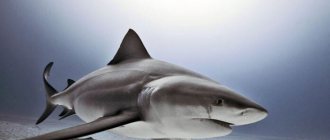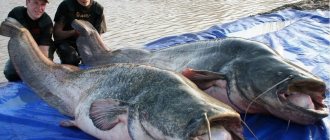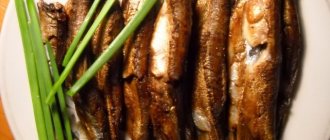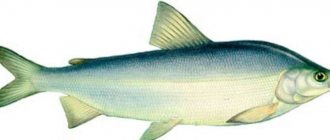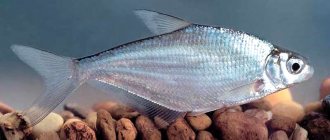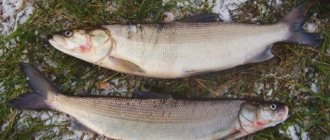For many representatives of the stronger half of humanity, fishing is a hobby, but not a means of profit.
Although, just recently, some 100 years ago, fishing was of no importance to many as an activity purely for pastime. For many, fishing was a means of survival. Nowadays, most anglers come to a certain, interesting place to catch a rare but valuable specimen that can leave a memory for a lifetime. Siberia and the Far East are also visited by many who like to go fishing and catch tasty and valuable fish, especially since there are many types of fish found here in sufficient quantities. In addition, the places also attract anglers because fishing here is mostly free.
Some areas here are distinguished by the fact that you can only really get here in winter. Unfortunately, there is nothing to do here alone, since the places are characterized by harsh conditions, and you need to know the places. Therefore, it is better to buy some kind of ticket and go fishing as a whole team together with a guide.
Winter fishing competitions are regularly held on Lake Baikal. There are plenty of similar interesting places in Siberia and the Far East, you just need to choose the right place.
Many fishermen dream of fishing on Lake Baikal, since grayling and omul are found here, as well as pike, ide, catfish, perch and other fish, both predatory and peaceful. In addition, there are very picturesque and interesting places with wildlife.
Exact fish habitats in Siberia and the Far East
The reservoirs of Western Siberia are considered one of the richest in terms of the number of fish living in them. The Ob River is also considered one of the richest in fish resources. It can also include its tributaries. In rivers such as the Yenisei, Tom, Amur, Yaya, Lena, Kia, Mris Su, Ters, Uryuk and others, there are a huge number of different species of fish.
The reservoirs of the Far East provide the largest amount of diverse fish, which corresponds to more than 60% of all fish caught in Russia. The seas of the Far East replenish the industrial catch with cod and salmon, which are highly valued for their tasty meat. As a rule, they are caught in the Sea of Okhotsk, Sea of Japan and Bering Sea, which belong to the Pacific expanses.
The following types of fish are caught in the Far East:
- 40% herring.
- 100% crab.
- 99% salmon.
- 90% flounder.
- 60% shellfish.
In other words, at least 80% of all fish that is caught on an industrial scale throughout Russia is caught here. In addition to fish, there is fishing for algae, which accounts for almost 90% of the total in Russia.
vendace
A small freshwater fish of the whitefish family. Dimensions of Siberian vendace: up to 35 cm in length and weight up to 1 kg. Semi-anadromous fish, i.e. lives both in the salt water of the ocean and in the fresh water of Siberian rivers flowing into the Laptev Sea. Vendace is consumed fresh, salted and smoked. Rich in nutrients as well as Omega-3 fats.
Fishing methods: commercial fish. It is caught mainly with seines, because the effectiveness of conventional fishing rods is low.
Fish from the carp family. The young are called roaches . Lives everywhere in the taiga zone. In Siberia it is found up to Yakutia. Reaches a weight of 3 kg and a length of 55 cm. Lives up to 20 years. Omnivorous fish. Lives in rivers, lakes, ponds. Avoids fast cold water and mountain rivers. Prefers rivers with more stretches of calm water and great depth.
Fishing methods: ides are caught using conventional types of gear. Float rods, donks, spinning rods, with various spinners and spinners. The ide takes well at dusk, because at this time it feeds. The bait is worms, bloodworms, maggots, bread, bran, etc.
Species of fish living in Siberia and the Far East
Grayling
Grayling belongs to the salmon fish species and is the most common species inhabiting water bodies located closer to northern latitudes. The largest numbers of this fish are found in the rivers of Siberia. He prefers rivers and lakes with clean water, but the water should be cold.
The most common individuals reach a weight of about 1 kilogram, although there are specimens weighing up to 3 kilograms. Despite this, a grayling weighing 6.8 kilograms was caught.
This fish is considered omnivorous, since its diet includes midges, grasshoppers, flies, algae, mollusks, and insect larvae. If he comes across eggs of other fish species on his way, he will eat them.
He prefers to stay close to riffles, near huge rocks, on rapids, etc., where fishermen with gear are waiting for him. Grayling can be caught both with a regular float rod and with a spinning rod or fly fishing rod. When using various spinners, preference should be given to smaller specimens. If you take a larger bait, you can catch larger fish, although in this case you will have to wait much longer for a bite.
Taiga fishing 2021. Virgin taiga. Grayling fishing. The beauty of Siberia.
Muksun
It belongs to the whitefish family, and is also a valuable industrial fish. This fish is found in any major river in Siberia. Fish is valued due to the presence of sufficient nutrients in the meat.
Muksun grows up to 75 cm in length and can gain weight up to 12 kilograms, although most individuals are found weighing no more than 2 kilograms. Despite this, fishermen catch more catchy specimens, weighing up to 7 kilograms. If a fisherman catches a fish weighing about 3 kilograms, then this is a huge success for him. This fish is caught with nets if there is no ban, since in some regions there is still a ban.
It is not necessary to catch this fish with nets, since muksun responds well to artificial baits such as flies.
Chir
Another fish that represents whitefish. The largest populations of this fish are observed in the Ob and Yenisei rivers. Fish prefer fresh waters, although they can live and develop in semi-fresh waters. Whitefish are also found in Kamchatka. As a rule, you come across individuals no more than half a meter long and weighing no more than 3 kilograms. Despite this, a fish was caught, weighing about 11 kilograms, which grew to a length of 84 centimeters.
Basically, this fish is caught in nets, but it bites well on a fishing rod or spinning rod. As bait you can take both living objects, in the form of mollusks, insects and larvae, and artificial baits that imitate the movements of living objects in the water. Edible rubber baits are very popular.
Ide
This fish is a prominent representative of the carp family, and is widely distributed both in Europe and Siberia. The ide is considered an omnivorous fish, but prefers rivers or lakes with warmer water. Therefore, the main places where you can find ide are ponds, lakes and rivers, but not in the mountains, where there is cold and clean water.
Ide grows up to half a meter in length, weighing about 3 kilograms, although in some rivers of Siberia individuals weighing up to 9 kilograms have been encountered. Ide is caught using ordinary float tackle or spinning rods equipped with artificial catchable baits.
The most favorable time for catching it is after dark. It can also be caught using regular worms.
Nelma
This fish is also a representative of the whitefish, but the largest of them. Prefers rivers and river basins located closer to the Arctic Ocean, as well as reservoirs of Siberia.
On average, individuals are found weighing about 10 kilograms, and nelma grow up to 50 kilograms. It has unsurpassed taste characteristics. Thanks to such taste characteristics, this species is caught very intensively, therefore, in some areas of Siberia it is prohibited to catch it.
It is almost impossible to catch this fish using a spinning rod, so it is caught industrially.
Omul
Another representative of the whitefish, the largest populations of which are recorded in Lake Baikal.
The omul grows to a small size and can weigh no more than 8 kilograms. Omul can be caught all year round, both from the shore and from a boat. He takes small baits that are brightly colored. Quite often it is caught with ordinary fish, meat, or simply foam rubber. In winter, this fish can be found at a depth of up to 200 meters, which requires special gear. Therefore, winter fishing for omul is fraught with serious difficulties.
Pyzhyan
The pyzhyan is found in various reservoirs of Siberia. It grows up to 0.8 meters in length and can reach a weight of about 5 kilograms. This fish is caught using cast nets or seines. Amateur fishermen use ordinary tackle and bait. The diet of this fish includes insects and their larvae, as well as mollusks.
Tugun
This fish prefers rivers that are located closer to the North. Most of this fish is in such large rivers as the Lena, Yenisei, Ob, etc. Occasionally, you can find specimens more than a meter long and weighing almost 100 kilograms. It is better to catch this fish in spring and summer using a seine.
Lenok
This is a fish that belongs to the salmon species, and which prefers freshwater bodies of water. Lenok is widespread in Siberia and the Far East. Prefers to stay on rifts, as well as in mountain rivers. Lenok is considered an exclusively predatory fish that feeds on living organisms such as flies, mollusks, insects, worms, etc. Lenok is caught exclusively on a spinning rod, using various spinners, wobblers or flies for effective fishing.
Taimen
This representative of salmon is listed in the Red Book. It is prohibited to catch taimen in almost all bodies of water. Likes to be in fresh but cold water. He doesn't go to sea. It can grow up to 2 meters in length and weigh about 80 kilograms.
Pike
Pike is a predatory fish that inhabits almost all water bodies of Russia and Siberia, and the Far East is no exception. Individual specimens weighing up to 35 kilograms and more than 1 meter in length are not at all uncommon here. The most productive periods for pike hunting are considered to be spring and autumn. Pike are caught mainly using spinning rods, using various artificial baits.
Dace
Dace prefers bodies of water with running and crystal clear water. It is caught using regular float rods. You can use a worm, maggot, bloodworm, ordinary bread or porridge as a hook bait.
Burbot
Burbot is the only representative of codfish that prefers fresh water bodies. It is most widespread in places that are close to the Arctic Ocean. In addition, it is found in almost all taiga zones. Mostly individuals weighing no more than 1 kg are caught on the hook, although there are individual specimens weighing up to 25 kilograms.
Burbot is more active during cold periods, and it spawns exclusively in winter, in severe frosts. Since burbot is also a predatory fish species, it is better to catch it using animal baits.
Chukuchan ordinary
This is the only representative of the Chukuchan family that can be found in the reservoirs of Siberia and the Far East. Chukuchan is also a predatory fish and prefers baits of animal origin. Therefore, it is better to catch it using mollusks, worms, insects and their larvae.
Chebak
This is a representative of the carp family. Distributed throughout Siberia and the Urals. Although the fish is not large, most specimens found weigh about 3 kilograms. Chebak does not refuse either animal or plant food, therefore, it can be caught with any type of bait, and it is caught with a regular float rod.
Fish of the northern seas - features and advantages
The lover of cold waters lives in the bays of the Arctic Ocean, as well as in the cold rivers of Siberia - Lena, Irtysh, Yenisei, Ob and small rivers.
Its wonderful taste cannot leave indifferent not only connoisseurs, but also those who are not enthusiastic about fish products. They say that only after trying northern fish can you understand what real fish is.
Its high quality is due to:
- the crystal purity of the rivers in which it lives;
- living in a natural environment;
- quick freezing technology that allows you to preserve all nutritional properties.
Fishing in Siberia and the Far East
Peculiarities
The most important feature of fishing in these places is the dispersion of reservoirs over a large area, which is not so easy to get to without special transport. An equally important feature is the current ban on catching certain species of fish that are listed in the Red Book. Therefore, fishing in Siberia and the Far East is associated with some difficulties. In this regard, there is nothing to do here alone, especially without special permission.
Advantages
The advantage of fishing in these places is that there are simply a huge number of fish species. Free fishing is allowed on most reservoirs. Despite this, there are already areas where the territory is either privatized or leased. To get into such an area for fishing you will have to pay a considerable amount of money.
Fishing in the Far East is especially important in the autumn, when grayling is caught. During this period, a huge number of fishermen come here.
Fishes of Siberia, inhabitants of taiga rivers
In this article I would like to analyze the most coveted and significant fish of Siberia, fish of northern rivers, mountain taiga streams with cold water and rocky rifts, and lakes. Freshwater ichthyofauna of Siberia, as well as the Urals. Ichthyofauna of the entire taiga zone of Russia. I will not mention the fish that are abundant in the southern zone, and will focus only exclusively on the fish of the taiga, the fish of the north. Noble breeds of fish that are hunted by amateur fishermen in pursuit of a big trophy, tourists traveling through the taiga, and indigenous people of the north, for whom fishing is a way of obtaining food, and not sport, entertainment and the pursuit of a trophy.
